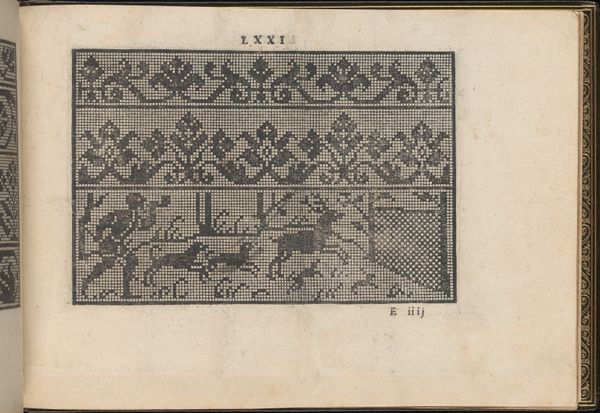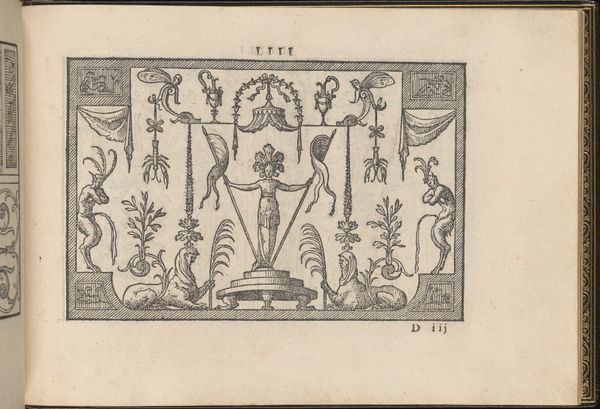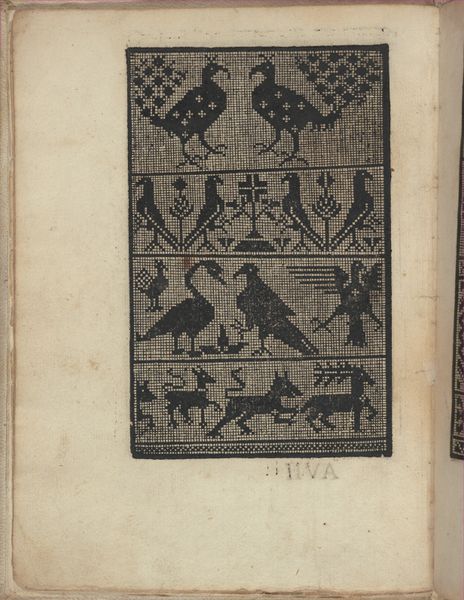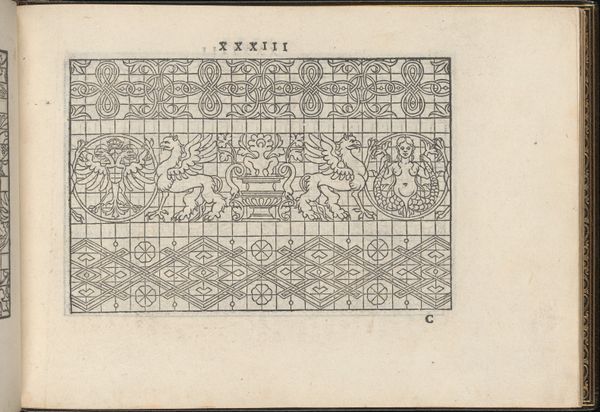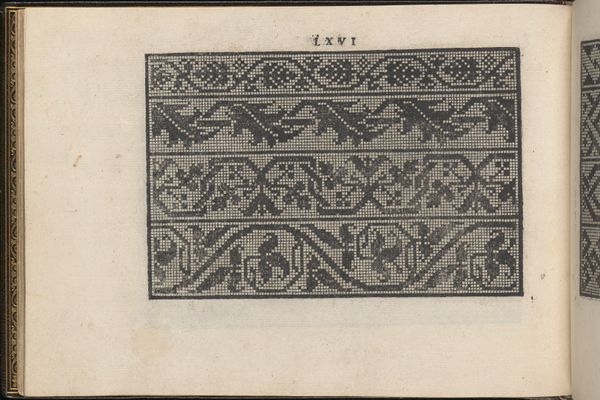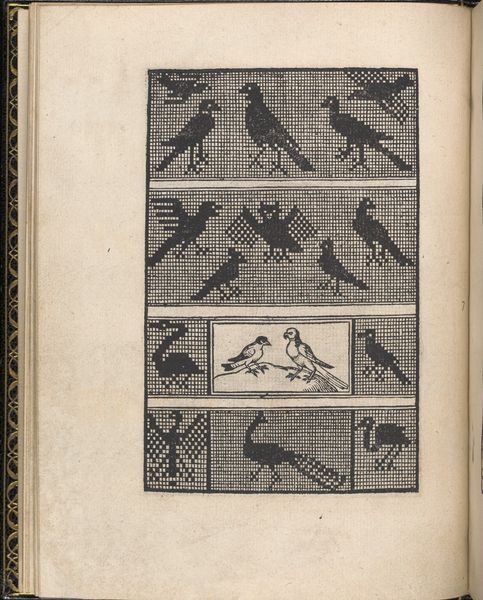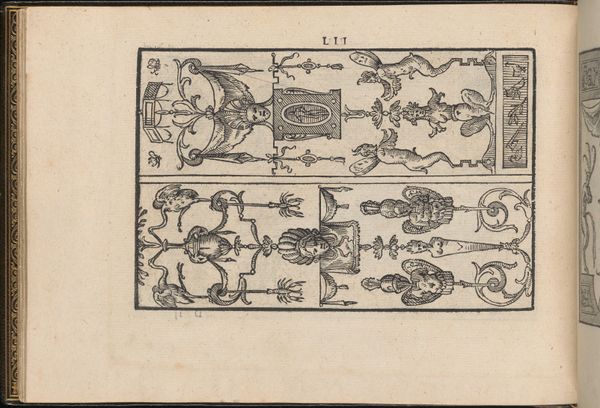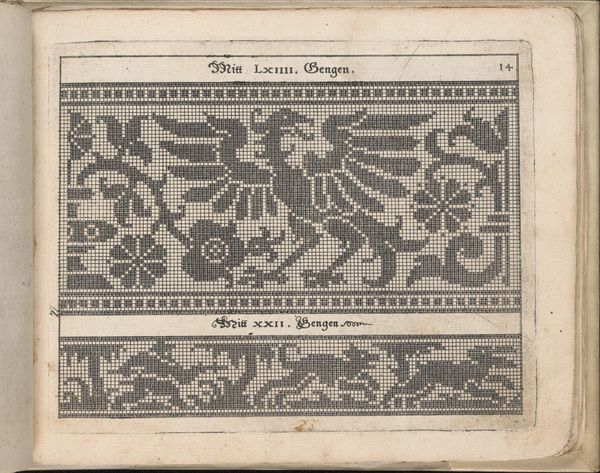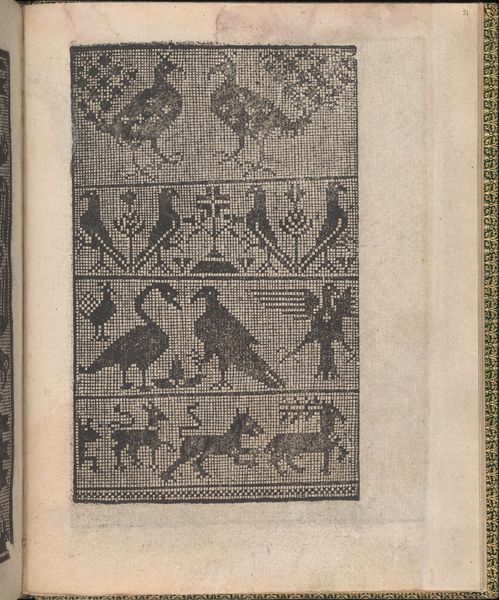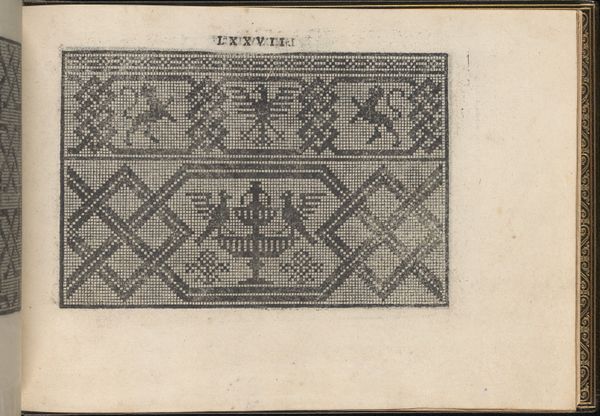
La Vera Perfettione del Disegno di varie sorti di recami, page 35 (recto) 1567
0:00
0:00
drawing, graphic-art, print, engraving
#
drawing
#
graphic-art
# print
#
11_renaissance
#
italian-renaissance
#
engraving
Dimensions: Overall: 6 5/16 x 8 7/16 in. (16 x 21.5 cm)
Copyright: Public Domain
Editor: Here we have “La Vera Perfettione del Disegno di varie sorti di recami, page 35 (recto)” from 1567 by Giovanni Ostaus, a print made using engraving. The design is organized into horizontal bands filled with stylized birds; the birds and grid pattern have a certain repetitive starkness to them. What can you tell me about it? Curator: Well, this print provides a pattern for embroidery. It speaks volumes about the domestic lives of women in the Renaissance. Consider that needlework was not simply a pastime but a crucial skill and even a form of expression largely relegated to women. Editor: So, in a way, these patterns acted as a visual language for women? Curator: Precisely. These designs offer us a glimpse into the creative agency women possessed within the confines of their domestic roles. These printed patterns democratized access to intricate designs, thereby shaping a visual culture of feminine artistry across social strata. And consider, too, that the act of embroidery itself could be a subtle form of resistance or self-assertion, stitching narratives into fabric, quite literally. Editor: That's really fascinating – that something seemingly so simple can be seen as a potentially subversive act. Are the birds symbolic at all? Curator: Undoubtedly. Birds, as symbols, carried a wealth of connotations - freedom, beauty, even religious significance. Their incorporation here elevated the craft, adding layers of meaning to the domestic sphere. In essence, it challenges the devaluation of women's labor by highlighting its inherent creativity and communicative power. Editor: I see them differently now, thank you. It highlights the dialogue between the personal and the political, doesn't it? Curator: Exactly! And that dialogue remains relevant today. These patterns challenge our modern perspectives and biases regarding gender roles.
Comments
No comments
Be the first to comment and join the conversation on the ultimate creative platform.
